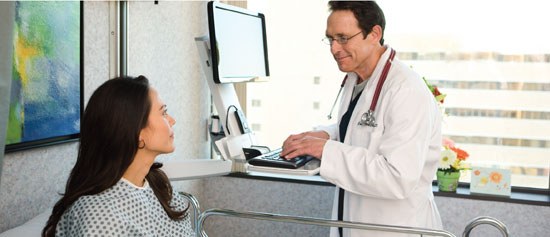 In this two-part series, Dr. Charlotte Hovet, medical director of Global Healthcare Solutions at Dell, shares her thoughts about how healthcare informatics and predictive analytics are helping to usher in a new era of wellness and disease prevention. Part one takes a look at healthcare informatics changes happening today while part two looks ahead to what we should expect by 2020.
In this two-part series, Dr. Charlotte Hovet, medical director of Global Healthcare Solutions at Dell, shares her thoughts about how healthcare informatics and predictive analytics are helping to usher in a new era of wellness and disease prevention. Part one takes a look at healthcare informatics changes happening today while part two looks ahead to what we should expect by 2020.
Q: How do you define healthcare informatics?
Last month at HIMSS’15, I spent considerable time speaking with attendees and Dell customers about health informatics. The buzzword “informatics” is often seen as the intersection between computers and medicine. But that’s not it. Informatics is a science; it’s the study and practice of creating, storing, finding, manipulating and sharing information. Informatics drives innovation, and when applied to healthcare, it enables us to effectively use information and knowledge to improve the quality, safety and cost of patient care.
I spent more than 20 years as a practicing family physician, and that clinical experience shapes how I view patient-centered, information-driven healthcare. Additionally, I’ve spent nearly a decade advising others on the transformation of healthcare and the role of information technology.
Q: What role does predictive analytics play in accelerating this healthcare transformation?
Analytics is becoming critical to healthcare. The wealth of digital data available to healthcare providers is expanding exponentially, and having the ability to share, integrate and analyze data opens the door to population health management, disease prediction and personalized medicine.
Because medical records now are digitalized, we have the ability to share data and use it to improve decision-making. Using data to impact clinical decisions is key to transforming healthcare. With analytics, we can connect disparate and different types of information to identify trends. From those trends, we gain valuable insights, and these insights should be used to change behavior. The only way we can significantly change patient-care outcomes is by changing the way care is delivered by clinicians and the way patients manage their health.
Q: How does information-driven healthcare change the doctor-patient relationship?
With information-driven healthcare, we can move from episodic care, where patients present with a particular problem, to new models of care delivery designed to optimize the health and wellbeing of the populations we serve.
This will transform today’s fragmented, volume-based healthcare delivery model into a mobile, interconnected, value-based, collaborative care delivery model. The status quo is being disrupted by innovative digital technologies and the ability to align patient wellness with physician payment incentives. The result is the emergence of new tools and new healthcare capabilities that will lead to more personal and precise medicine.
Q: What impact will new wearables technologies and smart sensors have on doctor-patient interactions?
We’re in the early stages of wearable devices; however, it’s clear that wearables and other technologies enabled by the Internet of Things will play an important role in empowering patients to use information and take greater responsibility for their health. This happens through the ability to access lab results from your smartphone or using telemedicine to expedite a diagnosis. All of this data—whether it’s directed to the patient or the provider—leads to more informed decisions.
In the future, we’ll see greater opportunities for shared decision-making as both patients and their physicians will have direct access to information that can make a difference. Wearable sensors will do more than remind you to walk more. They’ll trigger automated functions that can be incorporated into your lifestyle to increase prevention and wellbeing.
Wearable technology will be able to combine personal and social media data with sensor data to reveal useful insights into a person’s lifestyle, such as sleep patterns and exercise levels. All of this data will be fed into cloud-based solutions where a variety of predictive analytics can be performed to deliver more personalized medicine.
Q: How is Dell driving the delivery of patient-centered, information-driven healthcare?
For the past two decades, Dell has helped healthcare organizations keep pace with dramatic industry changes with end-to-end, future-ready IT platforms that drive healthcare innovation. Our leadership in the healthcare IT space was reinforced recently by Gartner, which ranked us the No. 1 IT Services Vendor in the Healthcare Providers Category for the sixth consecutive year.
This is a great accomplishment, and no coincidence, as we’ve focused on hardware, software and services to help our healthcare customers optimize their clinical information systems and be better prepared for what lies ahead. With our cloud and analytics expertise, they’re embracing more patient-engaging strategies while moving forward with clinical analytics.
In the next five years, the adoption curve will be very rapid for new healthcare IT technologies that provide sustainable benefits. Predictive analytics and informatics will still be at the epicenter, delivering the insight and knowledge required for healthcare transformation.
We’ll continue the discussion in part two of our conversation with Dr. Hovet. Till then, drop me a line at john.whittaker@software.dell.com to share your thoughts on the future of analytics in healthcare.
